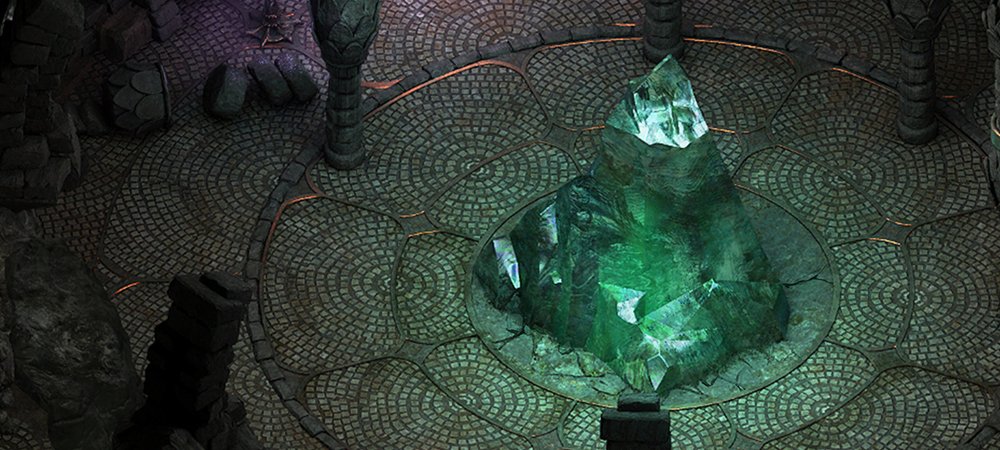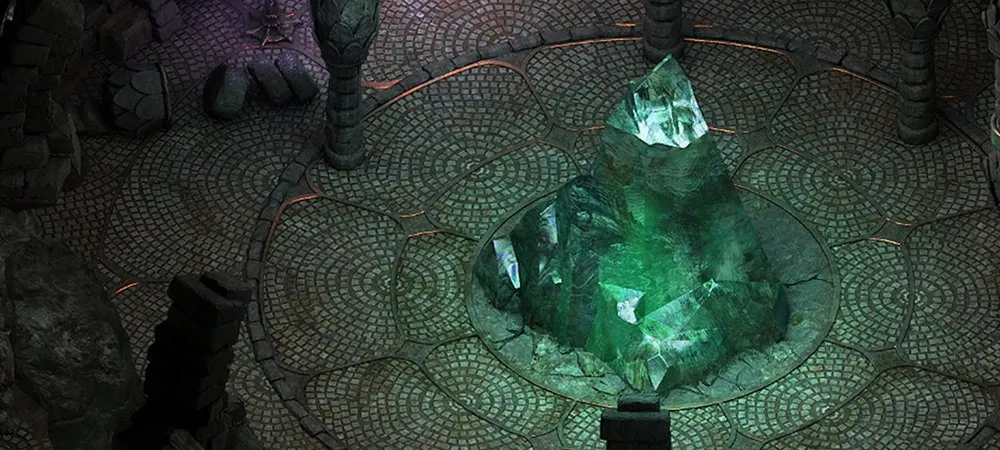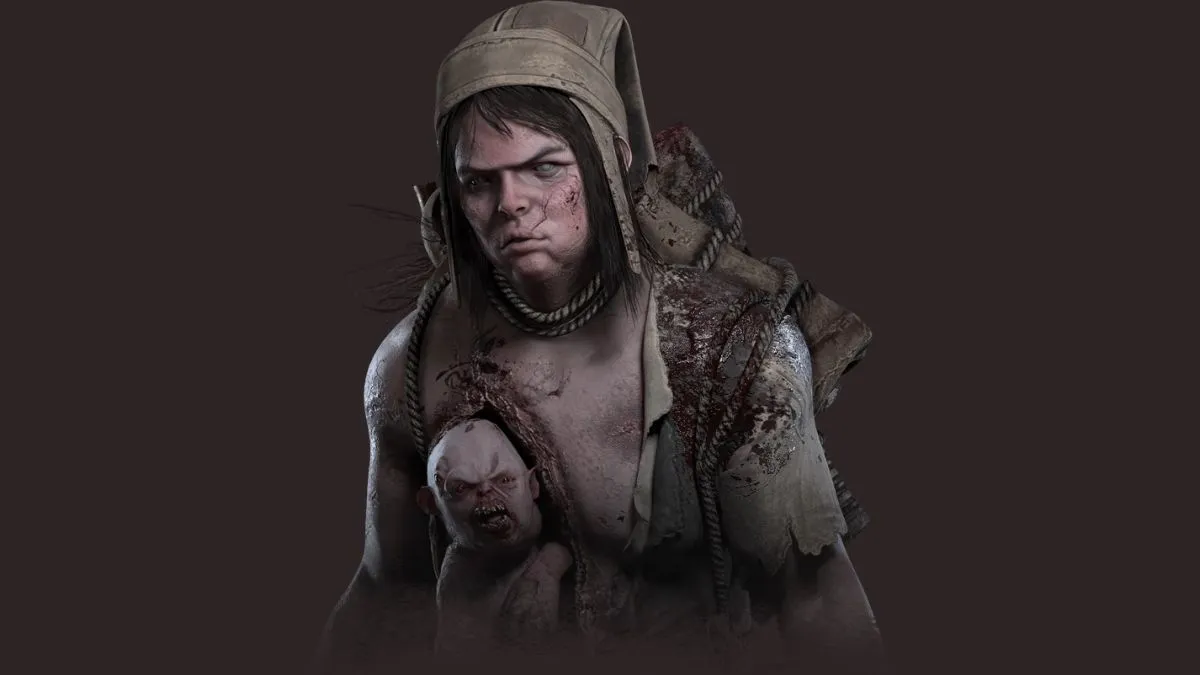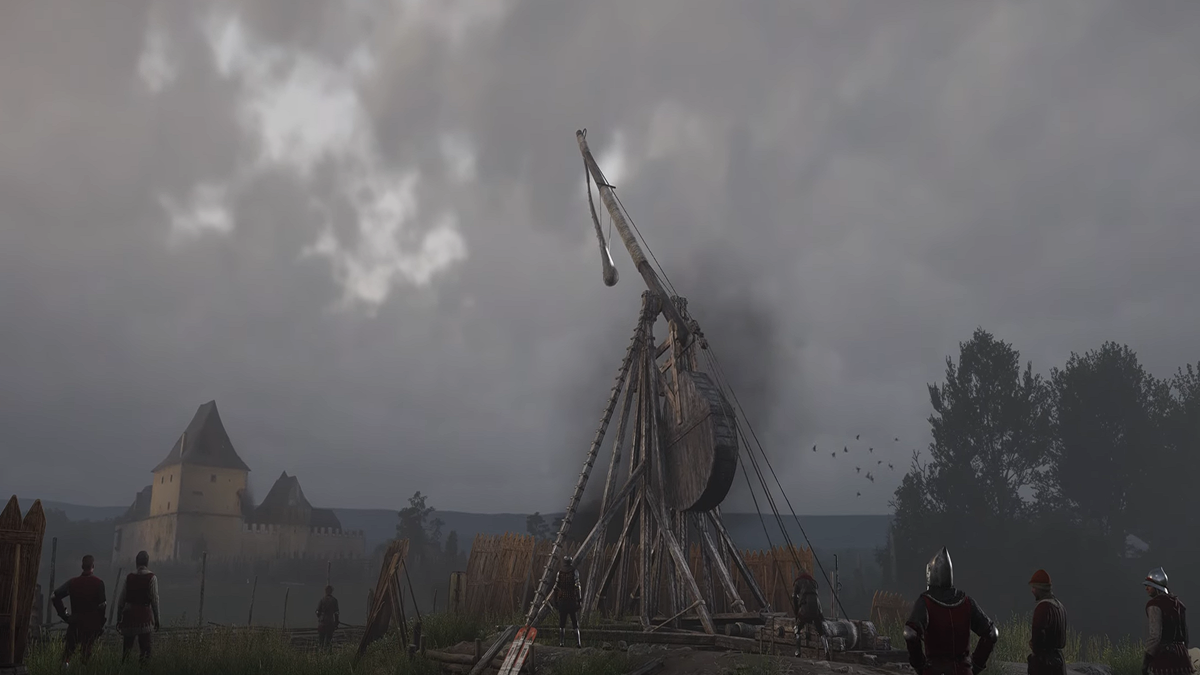It’s all about soul
Pillars of Eternity is a sort of game which appeared unlikely to exist again in any meaningful way. Isometric, party-based role-playing games certainly seemed like the sort of thing people made, “back in the day,” something to be fondly remembered as products of their era’s limitations that we’ve since moved on from.
Yet, here we are. People can still make these games, and these games can still be great.

Pillars of Eternity (PC)
Developer: Obsidian Entertainment
Publisher: Paradox Interactive
Released: March 26, 2015
MSRP: $44.99
The world of Eora, the setting for Pillars of Eternity, is a magical place. The environments are meticulously crafted and beautiful. Whether it be shimmering rock formations growing from the ground in mountainous terrain or a hideous altar in a dank and forgotten tomb, the visual design instills an urge to seek out every nook and cranny of a map. Character models do not fare as well, with muddled features and skin textures. They aren’t hideous, per se, but simply stand out in a manner which is unappealing in comparison to the game’s otherwise consistently good visual design.
The player takes the role of an immigrant seeking a fresh start in the colonies of the Eastern Reach, whose encounter with a mysterious cult awakens a great and terrible power within them. Worse yet, the region isn’t the bright opportunity it was promised to be. A curse has fallen over the land, its children are born hollow monsters without souls, and the helpless populace is growing increasingly desperate.
Taking place in just a tiny region of the larger world of Eora, the Eastern Reach is still dense with lore. Five nations interact in these colonies, with thousands of years of history, and there’s a remarkable amount of information to learn about it as progress is made through conversations or written volumes. The materials often raise as many questions as they answer, as there is much the people of Eora are still learning about their world, and there’s a real sense of mystery and wonder about it from beginning to end.
If you don’t like reading, you’re going to have a pretty miserable time. A surprising quantity of dialogue is voiced, all performed brilliantly, but this is just a fraction of the content. And, as is often the case in fantasy settings, there are a ton of odd names and places to keep track of, including nearly a dozen deities, assorted personalities, and events — and there will be a quiz. Thankfully, the game maintains an exhaustive cyclopedia which can easily be referenced most of the time (although, not during conversations when it would be of the greatest value).
Key to this setting is the concept of a soul as a quantifiable element, a form of seemingly self-perpetuating energy. Much remains unknown about souls and a field of study, Animancy, has arisen to research and experiment with them. In their natural cycle, souls take residence in bodies prior to birth, giving them life until their point of expiration, with the soul eventually moving on to a new life. Each time it transitions, a soul loses parts of itself (or perhaps gains lost parts of others), effectively becoming a new person. The soul, however, retains most of the experiences of its past lives, locked away from its present one except in rare cases when a soul becomes awakened.
Such an awakening happens to the player’s character early in the story and becomes the focus of their quest, seeking a means of reversing the effect before it drives them mad. Now what is known as a “Watcher,” the player can experience the past lives of others and speak to souls which have yet to move on, but is plagued by visions and nightmares. Gifted and cursed, the Watcher will learn of the role they once played in shaping the world of Eora and how they might yet change it again. Despite taking place in a relatively small region, there remains a massive scope to the events in the main plot and an enemy truly worthy of revulsion.
By contrast, the companions the player will meet along the way are all likable figures. Even the curmudgeonly Durance, a priest with a complicated love/hate relationship toward his Goddess, comes across as someone you’d like to go on an adventure with. There are eight companions to meet, each with their own reasons for traveling that can be explored in optional quests and conversations on the road. Up to five companions can travel with the Watcher at a time, and custom adventurers can be created by hiring them from any inn in the Eastern Reach, useful for filling gaps in a combat strategy.

All exploration and combat in Pillars of Eternity plays out as issued commands executed in real-time. The passage of time can be slowed to make issuing commands easier (the reverse is available to make trekking across previously explored areas faster), but there’s frequently so much activity in battles with a party of six that the always available option to pause and strategize is a necessity. Pausing is so crucial, an entire menu is dedicated to offering a wide range of situations in which the game can be made to automatically pause. It’s a godsend in a combat system which is all about micromanagement. Moving individual characters into and out of harm’s way, targeting spells and abilities (taking into account casting time) to maximize effects, switching equipment to adjust for differing enemy types, and other such second-to-second decisions quickly become a part of every fight.
As such, the experience of a typical combat encounter is a bit like being in a fun sort of traffic jam that you can have an impact on the result of. The action inches forward one step at a time, the player reacting to movements of the enemies, seizing opportunities, until the tide turns and the last enemy dregs are mopped up without interference. There is a lot to keep track of, and it can be easy for party members to be knocked unconscious if not attended to, which can then weaken the entire party until they start dropping like dominoes. The system has a simple interface, point and click for movement and attack with other abilities available above a character’s portrait. Mastering it, however, requires considerable planning and strategy in both preparation and execution.
Death, curiously, is an aspect in which Pillars is quite forgiving. When hit, characters lose points in two stats, health and endurance. If the character runs out of endurance, they will be knocked unconscious and are out of the fight until it ends. If they lose all of their health, they become maimed, and any subsequent damage will almost certainly kill them. While there is certainly a risk to the character when this happens, the effect is removed with rest and it’s rare to be in a position where rest is impossible (either by using a single-use item in the field or traveling to an inn).
The difficulty of combat encourages discretion, as does the game’s character growth system which only awards experience for accomplishing goals and exploring the world, not for killing enemies. When characters attain a new level, points may be spent to increase their skills and they can acquire new class-based abilities, chosen from a list. Leveling up is a much more streamlined approach than character creation, eschewing any option to control the development of attributes in favor of the game’s six basic skills. This makes leveling up feel like less of a chore than many other games of this type, a welcome trait when the player may be dealing with half a dozen characters all earning a level at the same time.

Equipment is the other means to improving a character’s abilities. Shops in the various communities carry special arms and armor at random for exorbitant prices, often with potent effects. Equipment can also be enchanted to confer bonuses, or even crafted entirely, using materials collected from monsters and the environment. The crafting system is not complex or deep, just an available list of things which can be made based on recipes, materials, and level, but it does provide ways to gain an additional edge.
Pillars of Eternity offers a lot of content and a good variety of ways to experience it. Four difficulty settings exist, along with the brutal “Trial by Iron” mode, which allows only one save file, automatically deleted if the Watcher dies. Dozens of side quests and lesser tasks are available by chatting with townsfolk or just stumbling around in some cases. A stronghold acquired early in the game can be restored to its former glory, offering more quests and assorted benefits, but must also be defended from threats both outside its walls and from the unexplored depths below.
Many quests can be resolved in multiple ways, with different effects on the player’s reputation in the world, allowing for a considerable amount of narrative replay value as well. A decent range of racial types pairs well with a wide variety of character classes, especially in the range of magic-using classes which have a noticeable diversity in the function of their abilities.

Obsidian has crafted a game full of challenge, intrigue, betrayal, and heart. The Eastern Reach is bleak and hopeful at the same time, and the main plot is packed with twists and surprises with staggering ramifications for a world players will feel they have become part of. Its combat is tense and relentless despite the capability to pause at any point, the mechanics offering complex strategic challenges with difficulty settings to accommodate most levels of skill. Pillars of Eternity proudly carries on the legacy of the classic computer RPG, and those who remember them with fondness should find in it a welcome addition to the genre.
[This review is based on a retail build of the game provided by the publisher.]





